The natural life cycle of cannabis in the wild
Cannabis sativa is an incredibly rewarding plant to witness growing, with every transition into the next phase providing rich visual feedback for the grower. By understanding the basics about the life cycle of cannabis in the wild, gardeners will be able to respond by providing the necessary requirements for the plant to stimulate its growth. In this article we will guide you through the cannabis plant’s natural life cycle, breaking down the different stages of the plant’s growth and what cannabis plants require in order to survive in the wild.
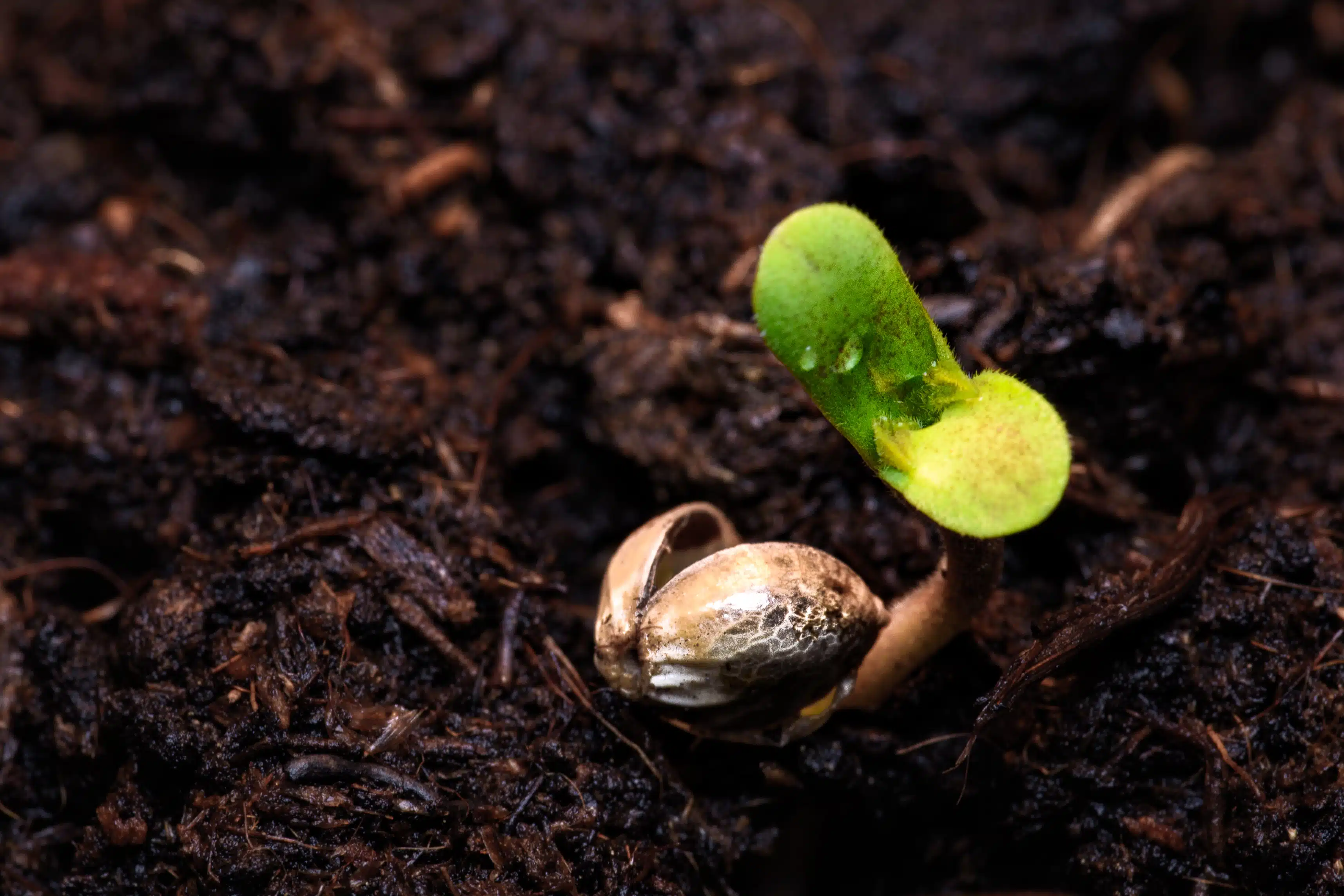
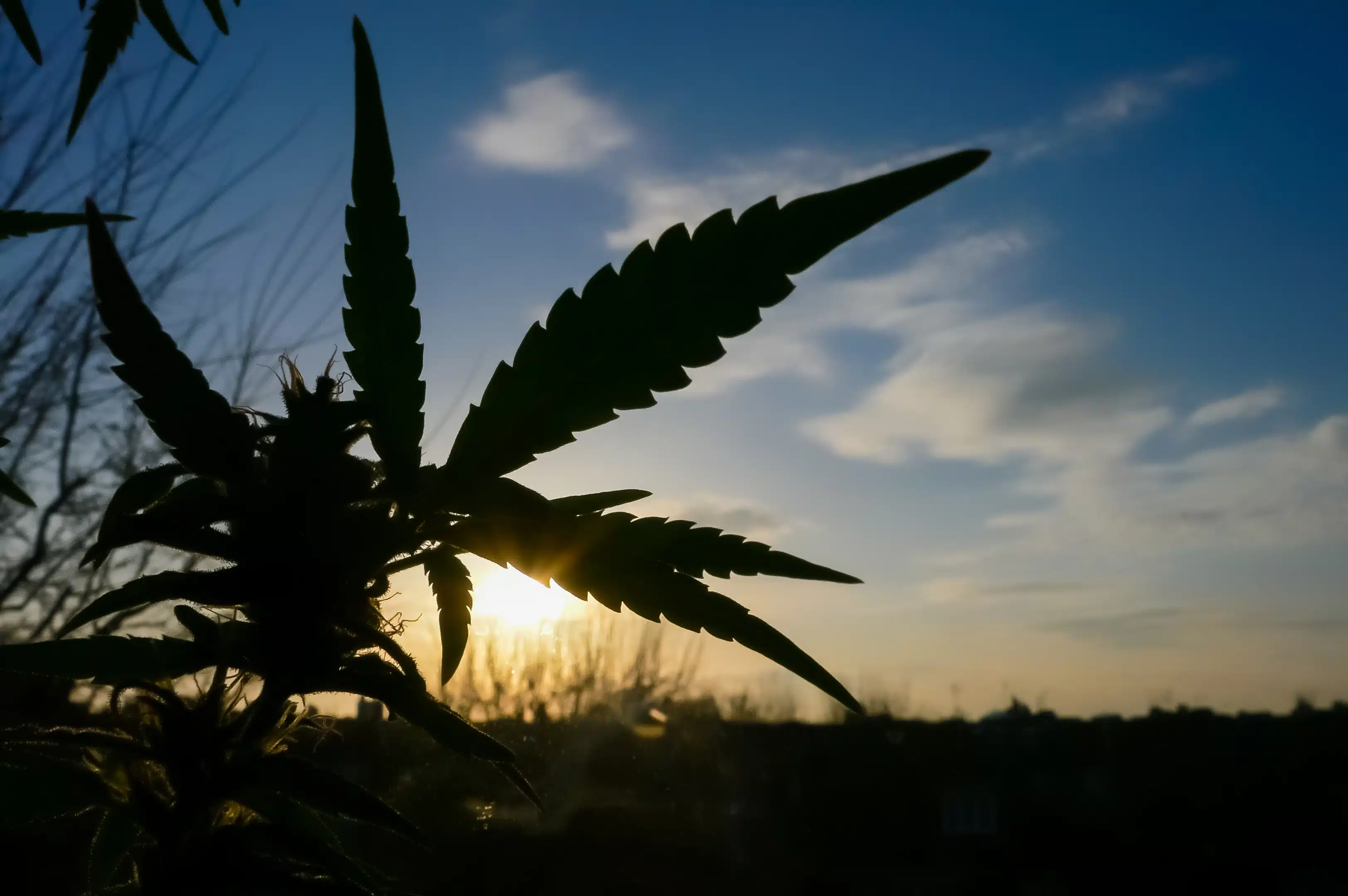
Cannabis is an annual plant
Cannabis is an annual plant, meaning that it will complete its entire life cycle, from being a seed to producing it own seeds and beyond, within the space of a year. Specifically with cannabis, this can be anywhere within the range of four to ten months. The growth stages of cannabis can be broken down into four main stages:
Germination (3 – 10 days)
Seedling (2 – 3 weeks)
Vegetative (3 – 16 weeks)
Flowering (8 – 16 weeks)
There are differences in flowering time between the two main cannabis varieties. This is because what are commonly known as indica and sativa varieties of cannabis originated in different parts of the world. Therefore, with different natural environments comes a different set of characteristics due to adaptation.
Germination time:
3 – 10 days
Seedling time:
2 – 3 weeks
Vegetation time:
3 – 16 weeks
Flowering time:
8 – 16 weeks
In the wild, different plant types evolved from different environments
Indicas originated around the Northern Hemisphere, mainly around the Middle East and North Africa, where the humidity is lower, the nights are colder and the summer is shorter. Adapting to a colder climate, these plants were shorter, with darker green leaves and a shorter distance between the internodes. The general flowering time of indica variety plants tends to be 7 – 9 weeks.
Sativa, on the other hand, adapted to the warmer climates of South East Asia and Central/ South America. These tropical, equatorial plants grow taller with larger spaces between the internodes and lighter green leaves. Sativa variety plants generally take between 10 – 12 weeks to flower, but some can take as many as 16 weeks.
Human and natural selection
Humans began selectively breeding cannabis about 4000 years ago. Some types were bred for their long, strong fibres; some for their psychoactive properties. As time passed and the humans travelled, some of the selectively bred strains ‘escaped’ back to the wild and continued to evolve, adapting to their new environment. They carry traits from both human and natural selection.
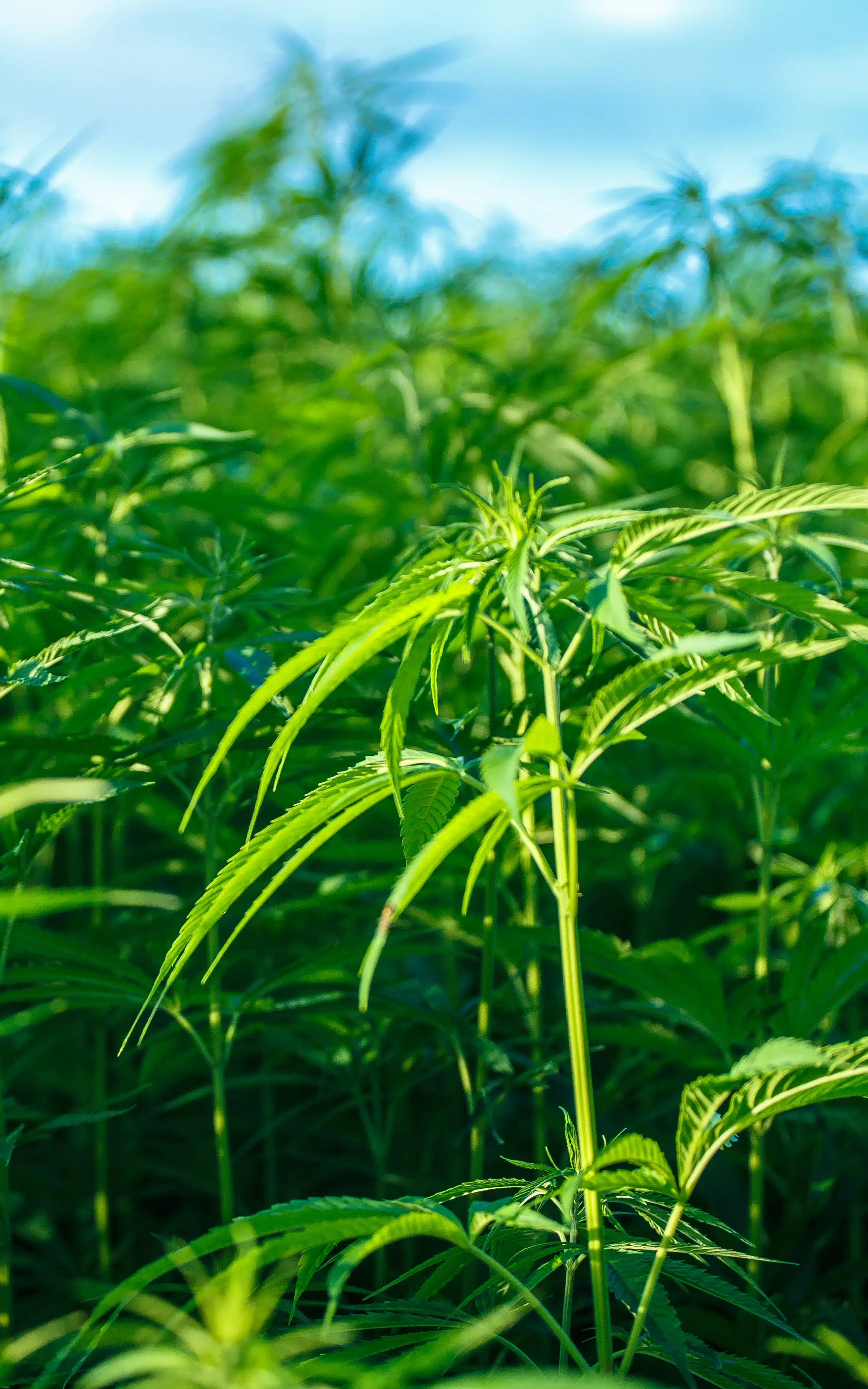
Germination stage
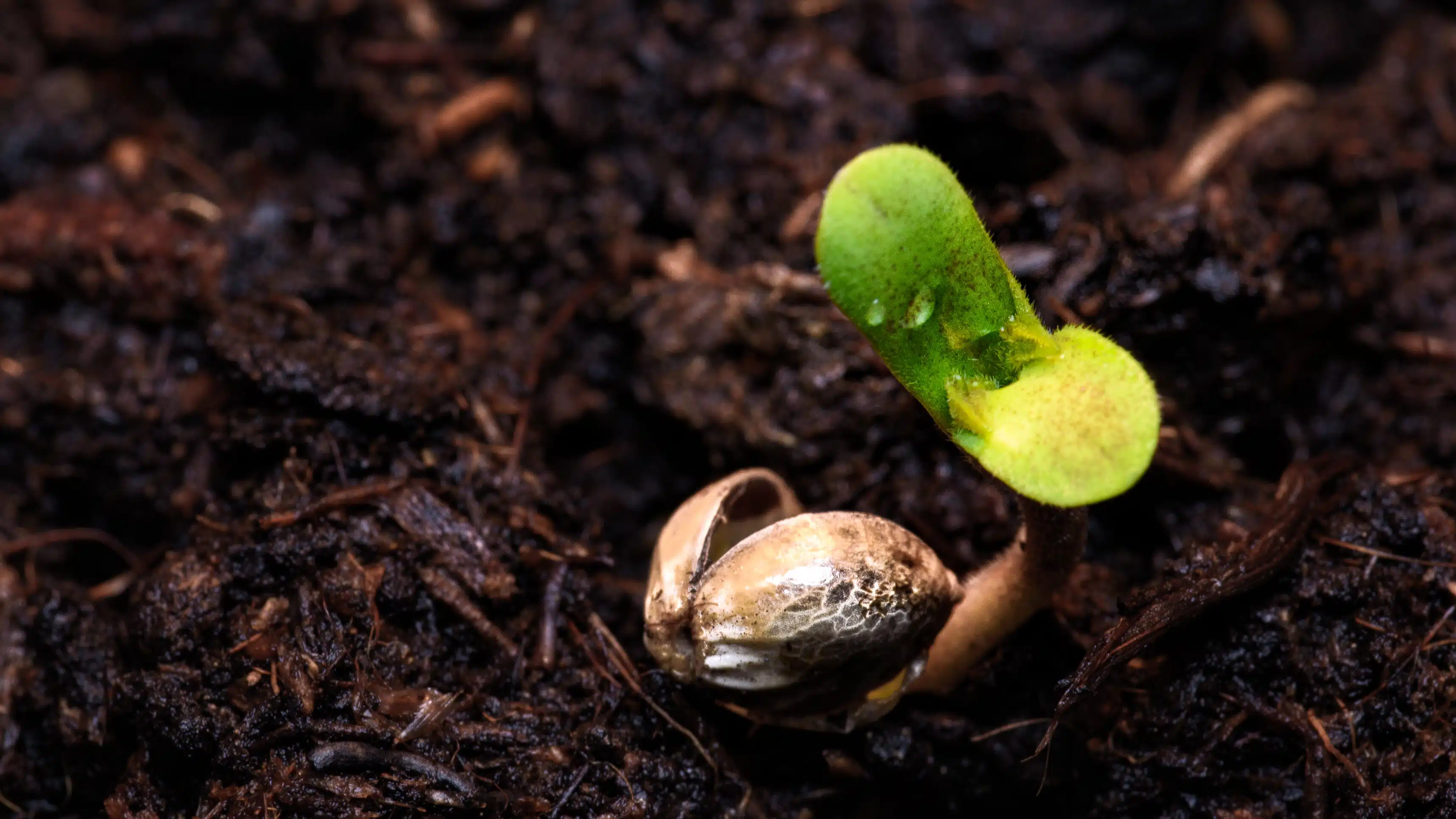
Temperature:
21°C (70°F)
Humidity: 65 – 80%
Photoperiod:
24 hours of darkness
A cannabis plant’s life cycle begins in the spring. After disseminating from the previous generation in the winter, cannabis starts as a seed in the soil. Like most plant seeds, cannabis needs the right combination of moisture, oxygen, temperature and light conditions in order to begin germination. When the germination process begins, the casing of the seed begins to open up.
The seed’s embryo breaks through to form a root which will begin to shoot out of the crevice. This tap root will shoot downwards, allowing the stem to push upwards. This stem eventually grows two cotyledon leaves which will be above the surface of soil in order to capture energy from the sunlight.
Seedling stage
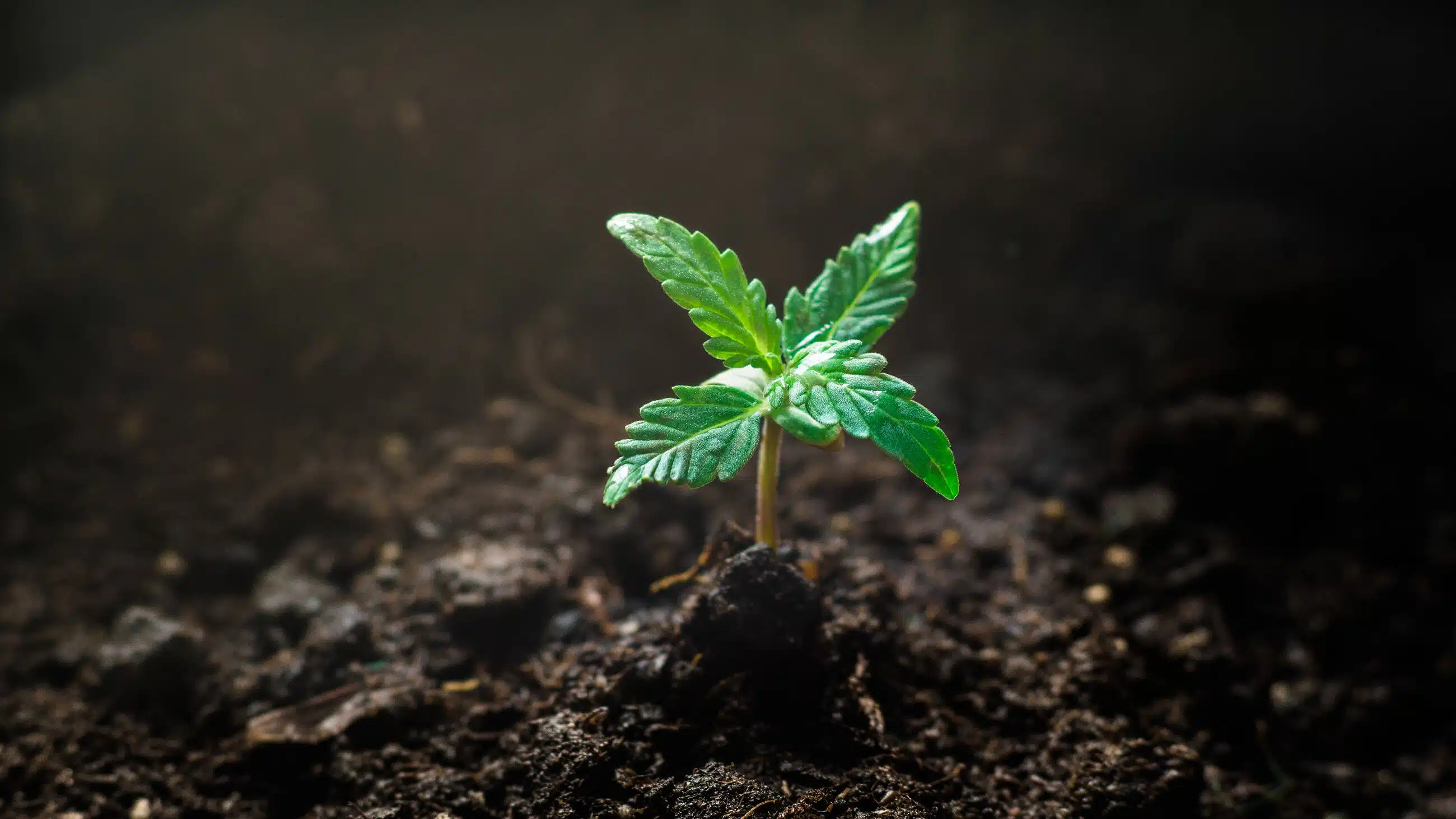
Temperature:
22 – 27°C (71 – 80°F)
Humidity: 65 – 80%
Photoperiod:
18 hours of light /
6 hours of darkness
At this point, the plant enters its seedling stage. This stage will last about two or three weeks, as it will begin to sprout the iconic cannabis fan leaves. As more growth develops, the plant’s leaves will start to produce more blades, also known as fingers. A mature plant’s leaves will have between five to seven blades.
Cannabis plants are still generally considered to be a seedling until they begin to grow leaves with this range of blades. During the seedling stage, the plants are very delicate and require a minimum of 6 hours of direct sunlight in order to survive.
Vegetative stage

Temperature:
22 – 26°C (71 – 79°F)
Humidity: 40 – 60%
Photoperiod:
18 hours of light /
6 hours of darkness
The vegetative stage is the next part of a a cannabis plant’s development. The length of time this stage takes varies widely, depending on how late in the season it is when the seed germinates. This stage sees the plant’s growth increase dramatically, as it will begin to develop lots of foliage and increase in size.
Under the soil, the root system will also be developing and stretching out in search of moisture and nutrients. This stage overlaps between the spring and summer seasons, as some of the longest and warmest days are in the summer, which makes the early summer a vital stage of a cannabis plant’s growth.
Flowering stage
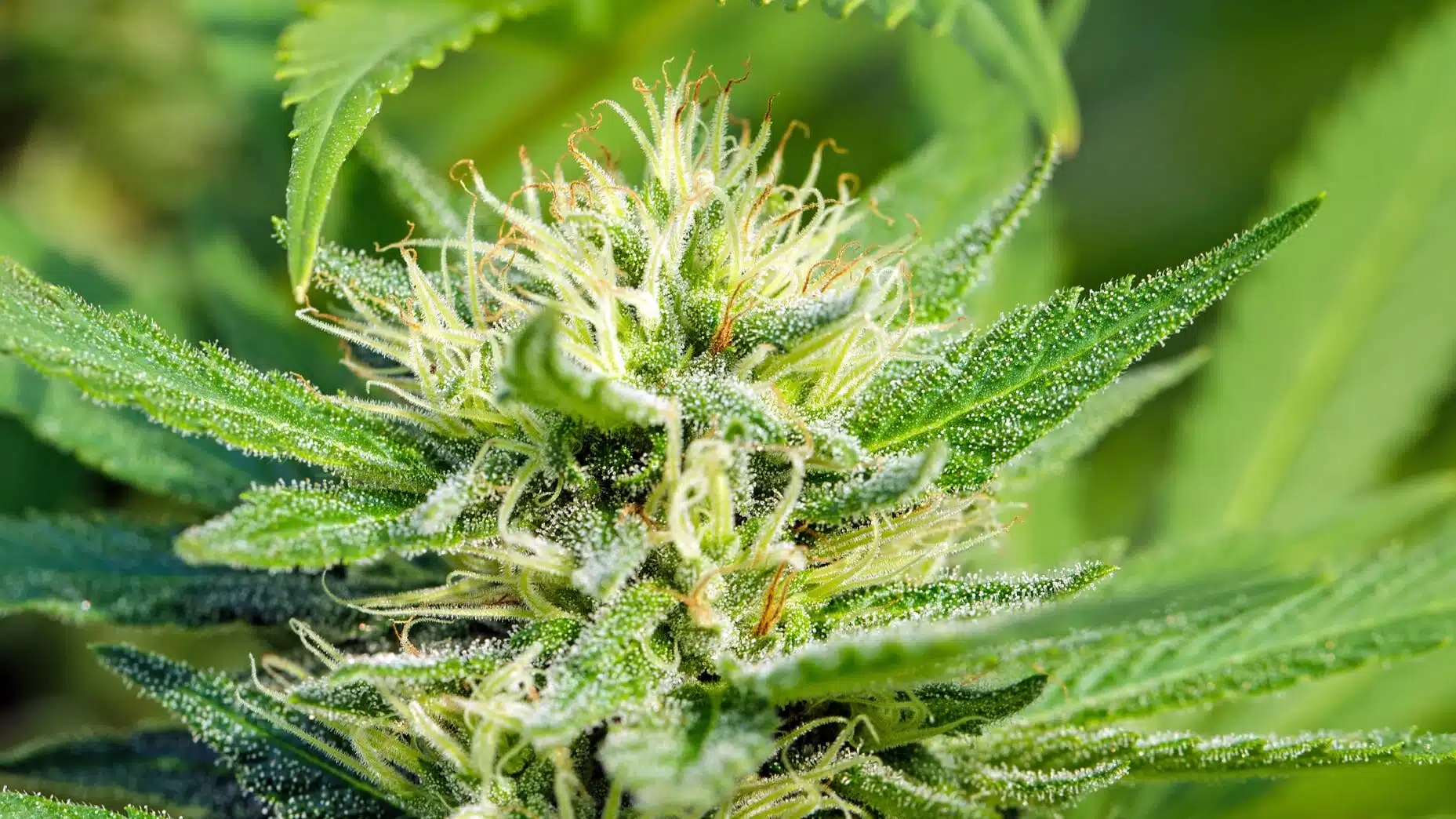
Temperature:
18 – 26°C (64 – 79°F)
Humidity: 40 – 50%
Photoperiod:
12 hours of light /
12 hours of darkness
As summer comes to an end and autumn begins, the flowering stage is triggered. This is because the days begin to shorten, going from longer days and shorter nights into a schedule more closely resembling a 12hr day, 12hr night cycle. This signals to the plants that they will die soon; they begin to produce flowers, in order to promote pollination and subsequently the production of seeds for the next cycle.
The plants will still require at least 6 hours of direct sunlight during this stage. Initially, the plant will continue to grow, usually doubling or even tripling in height depending on the strain. The plant will start to shoot out pistils or white hairs, and clusters of these will begin to form together as pre-flower sites.
During mid-flowering the bud will stop its height growth, and start to focus its development into the fattening of the buds. As the flower reaches the late stages of flower, the trichomes density begins to increase and the plants will become increasingly sticky. The pistils, which were initially white, begin to turn into an orange-brown colour.
Male flowers
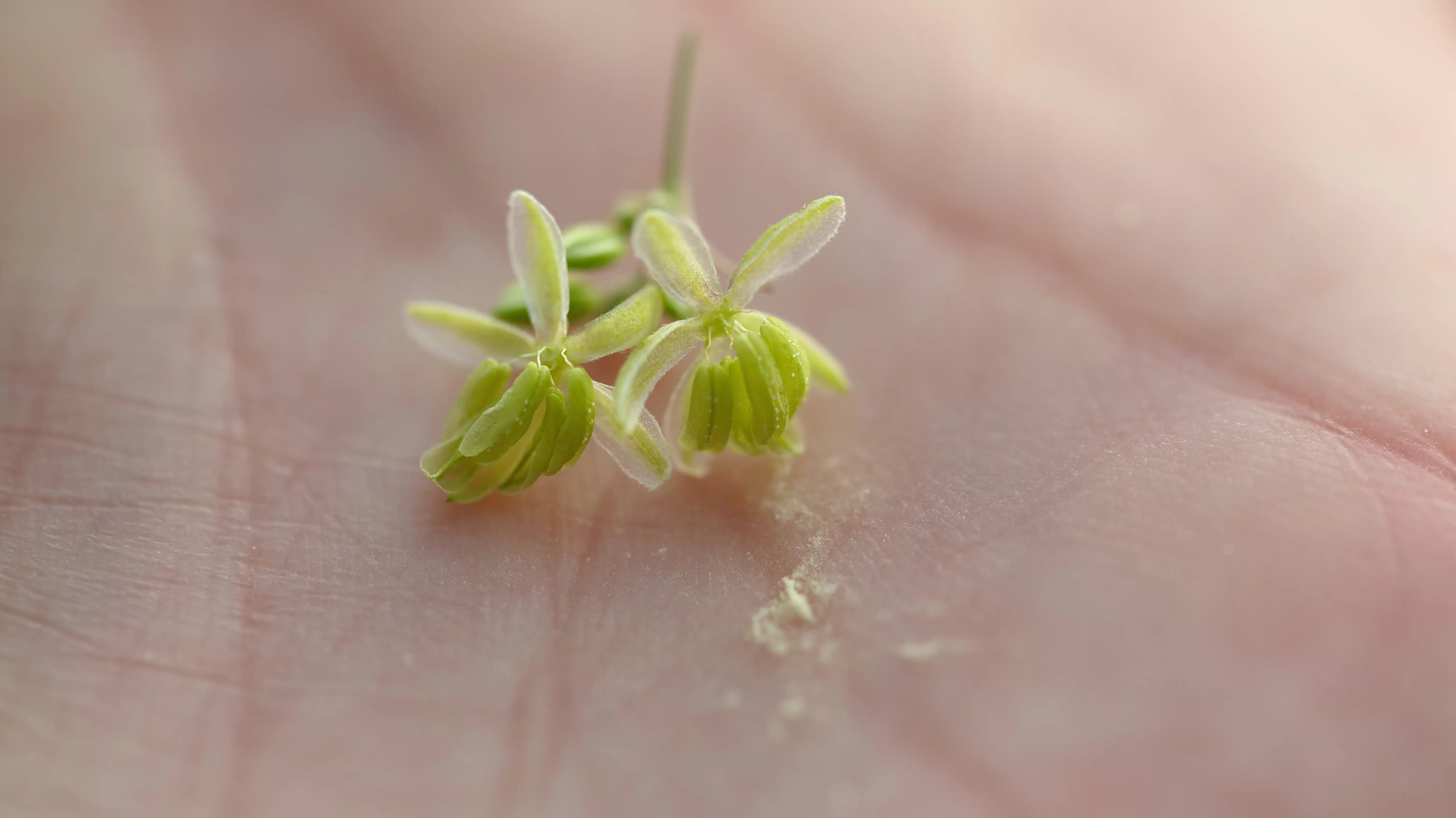
Cannabis is what is called a dioecious plant, which means that the male and female reproductive organs – the flowers – are not found on the same plant. From the seeds produced by wild cannabis, approximately half of the plants will be male, and half will be female.
The flowers on the male plants first develop as small balls, which grow larger as they ripen. Finally they open up to release the pollen where it is carried away, usually by the wind, but also by insects, animals or even people brushing against the plants.
Female flowers
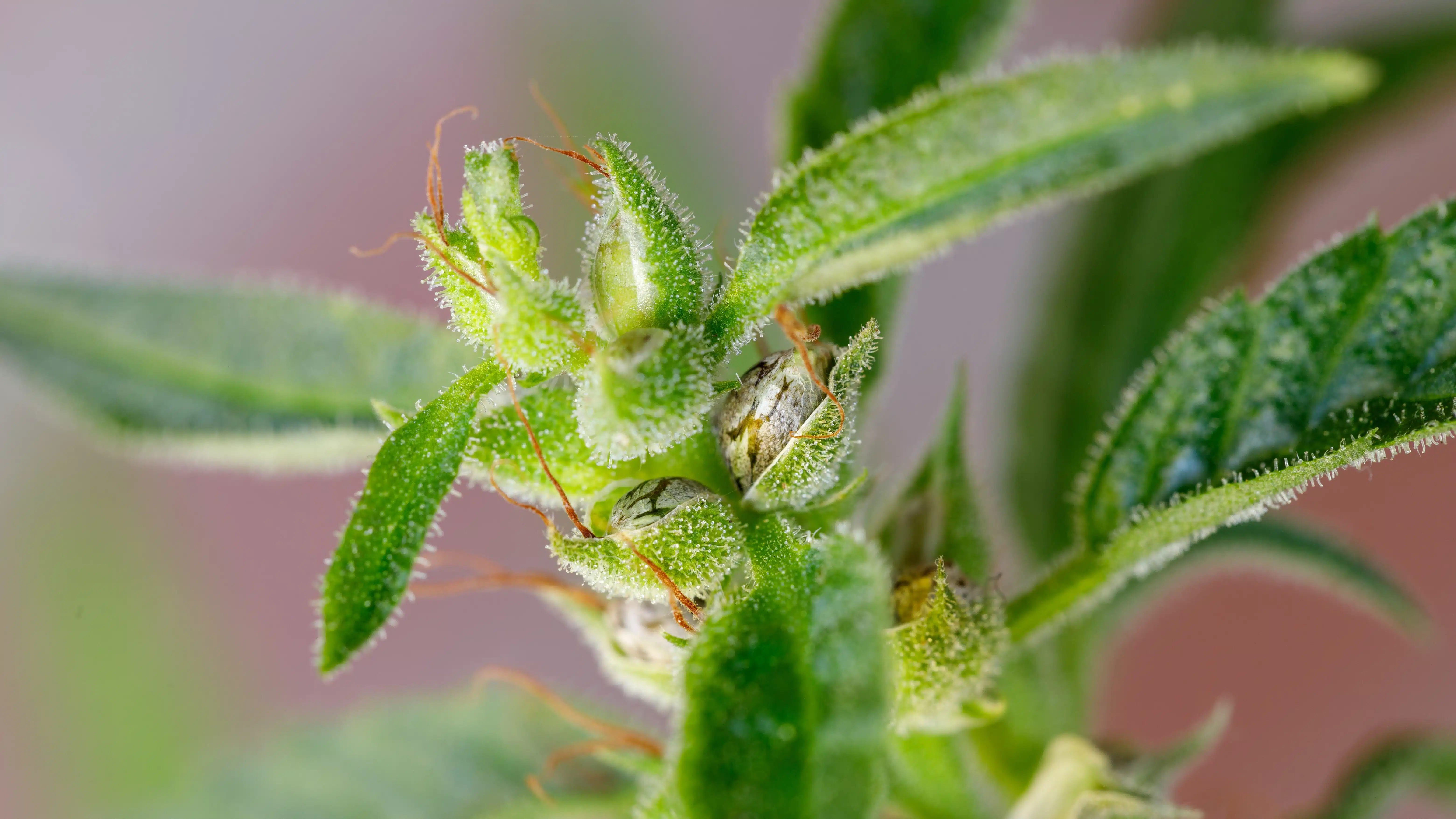
A female cannabis flower looks rather like a parrot’s beak, with two white, slightly sticky hairs emerging from it. When the male pollen meets a female flower, pollination occurs. Seeds begin to develop inside the female flowers. Throughout the late summer and the autumn, the seeds swell, ripen, and mature inside the flower clusters. Once they are ripe, they begin to drop to the ground where many of them will be eaten by birds or rodents.
With the changing of seasons from autumn into winter, also comes the death of the wild cannabis plant. It is also at this time that the seeds from pollinated female plants begin to disperse across the soil, lying dormant through winter until spring when the right conditions for the seed to germinate start to form again.